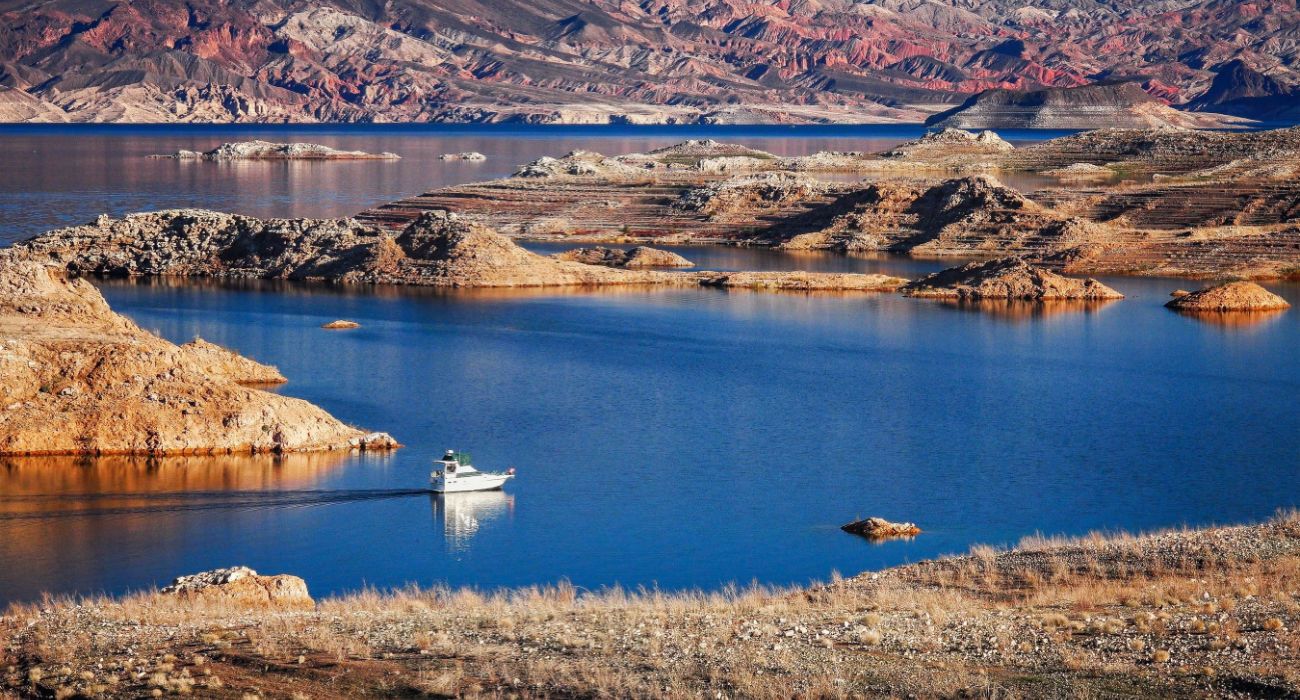Quick Links
Lake Mead is the largest reservoir in the United States when measured by water capacity. The reservoir was formed by the damming of the Colorado River with the construction of the massive Hoover Dam. When it is at maximum capacity, Lake Mead is 112 miles long and 532 feet at its deepest. Lake Mead has remained below full capacity since 1983.
Lake Mead flooded a large area that had been home to settlers and prehistoric populations. The reservoir flooded archeological sites, ghost towns, and much more. Lake Mead's water level famously fluctuates significantly over time. During these times, some of the ghosts of the past reemerge from the depths of Lake Mead - so what is lost to the waters of Lake Mead?
Lost City Of Ancestral Pueblos
One of the hidden secrets of Lake Mead is its "Lost City" of ancestral pueblos called the Pueblo Grande de Nevada. It is a complex of villages inhabited by ancestral pueblos and Basketmakers (they seem to have lived side by side) first seen by whites in 1867.
The structures were quite large and elaborate, with some structures consisting of 20 or more rooms. One building even had as many as 100 rooms.
The last inhabitants of the Lost City are believed to have left hundreds of years ago. It was a remarkable site for archeologists, with a wealth of walls, tools, weapons, food, and even skeletal remains found in archeological digs.
Lost City Museum of Archaeology:
- Open: Wednesday through Sunday, from 8:30 a.m. to 4:30 p.m.
- Closed: Monday and Tuesday
- Admission: $6.00 Per Adult
Unfortunately, the Pueblo Grande de Nevada, or the "Lost City," was doomed with the construction of the Hoover Dam and Lake Mead. Archeologists worked overtime to discover and preserve what they could of the site up until water began to seep into the site.
Not all the sites were submerged by the Lake, but the most important, Pueblo Grande de Nevada (Lost City), was. Many of the sites remained above the water, and the recovered artifacts are now on display at the Lost City Museum of Archaeology in Overton, Nevada.
Mormon Ghost Town Of St. Thomas
St. Thomas is a ghost town that was founded by Mormons in 1865 that reached a peak population of 500 residents. It was abandoned in 1871 when the residents found out they were in Nevada and not Arizona or Utah, and Nevada sought back taxes (it turns out one can run away from taxes).
New Mormon settlers came in the 1880s, but they were forced to relocate with the construction of the Hoover Dam.
- Founded: 1865
- Abandoned: 1871
- Submerged: 1930s
- Reemerged: 2000s
The ghost town was flooded by Lake Mead as the waters rose in the 1930s. But as the leads of the lake dropped in the 2000s, the ghost town resurfaced from the depths. For as long as the lake levels remain low, people can visit St. Thomas in the Lake Mead National Recreation Area.
What Other Secrets Does Lake Mead Hold?
One of the known secrets of Lake Mead is a B-29 Superfortress, weighing in at 104,556 pounds, that crashed and sank into the lake at 9:51 a.m. July 21, 1948. It is at the bottom of the lake, so visitors need to dive to see that wreck.
But there have been plenty of shipwrecks (or boat wrecks) reappearing out of the lake as the lake level is low. This should come as no surprise given that it was considered America's First National Recreational Area attracting innumerable boating enthusiasts every year. Everything from speed boats to a WW2 "Higgins boat" has been discovered.
On the scarier side, human remains have also emerged out of the lake. Some 250 people have died in the lake over the past decade, and as the level drops, human skeletons reemerge. One particular body found inside a barrel is thought to have had mob connections (it is thought the mob could dispose of bodies in the lake).
Lake Mead is one of the fun destinations for folks in Las Vegas, offering plenty of water sports and a great chance to cool off in the hot desert weather. The lake provides water to almost 20 million people and large areas of farmland.

